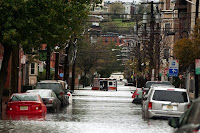President Trump is expected to issue an executive order soon to reverse Obama-era rules to cut carbon pollution, including a moratorium on leasing public lands for coal mining and a plan to reduce carbon emissions from power plants.
Trump and his appointees argue that these steps will bring coal miners’ jobs back (although coal industry job losses reflect competition from cheap natural gas, not regulations that have yet to take effect). But they ignore the fact that mitigating climate change will produce large economic gains.
While burning fossil fuels produces benefits, such as powering the electric grid and fueling cars, it also generates widespread costs to society — including damages from climate change that affect people around the world now and in the future. Public policies that reduce carbon pollution deliver benefits by avoiding these damages.
Since the Reagan administration, federal agencies have been required to enact only regulations whose potential benefits to society justify or outweigh their potential costs. To quantify benefits from acting to curb climate change, the U.S. government developed a formal measure in 2009 of the value of reducing carbon pollution, which is referred to as the social cost of carbon, or SCC. Currently, federal agencies use an SCC figure of about US$40 per ton in today’s dollars.
Now the Trump administration and critics in Congress may reduce this figure or even stop using it. EPA Administrator Scott Pruitt’s recent comment that carbon dioxide is not “a primary contributor” to climate change suggests that Pruitt may challenge the agency’s 2009 finding that carbon emissions are pollutants and threaten human health.
Read more at Curbing Climate Change Has a Dollar Value — Here’s How and Why We Measure It

No comments:
Post a Comment